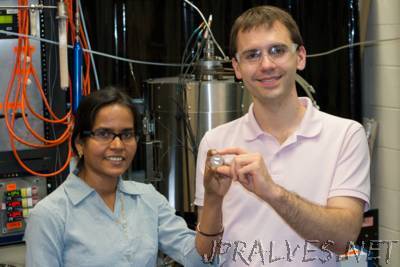
“MIT researchers have identified the proper temperature and chemical mixture to selectively separate pure copper and other metallic trace elements from sulfur-based minerals using molten electrolysis. This one-step, environmentally friendly process simplifies metal production and eliminates the toxic byproducts such as sulfur dioxide. Postdoc Sulata K. Sahu and PhD student Brian J. Chmielowiec ‘12 decomposed sulfur-rich minerals into pure sulfur and extracted three different metals at very high purity: copper, molybdenum, and rhenium. They also quantified the amount of energy needed to run the extraction process. An electrolysis cell is a closed circuit, like a battery, but instead of producing electrical energy, it consumes electrical energy to break apart compounds into their elements, for example, splitting water into hydrogen and oxygen. Such electrolytic processes are the primary method of aluminum production and are used as the final step to remove impurities in copper production. Contrary to aluminum, however, there are no direct electrolytic decomposition processes for copper-containing sulfide minerals to produce liquid copper. The MIT researchers found a promising method of forming liquid copper metal and sulfur gas in their cell from an electrolyte composed of barium sulfide, lanthanum sulfide, and copper sulfide, which yields greater than 99.9 percent pure copper. This purity is equivalent to the best current copper production methods. Their results are published in an Electrochimica Acta paper with senior author Antoine Allanore, assistant professor of metallurgy.”
